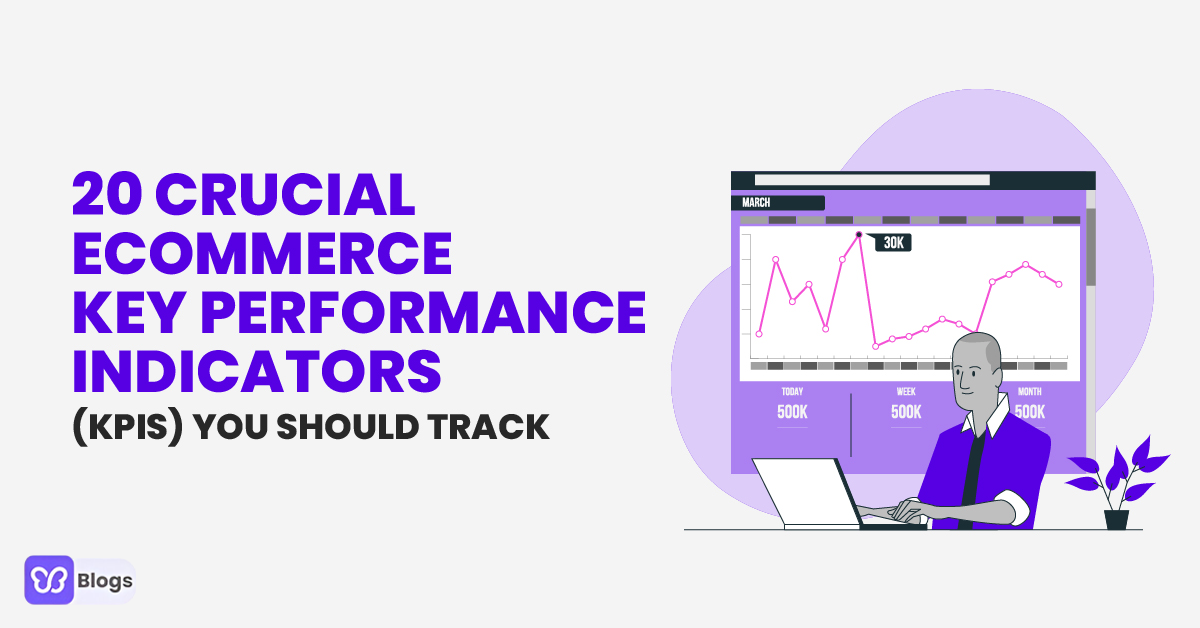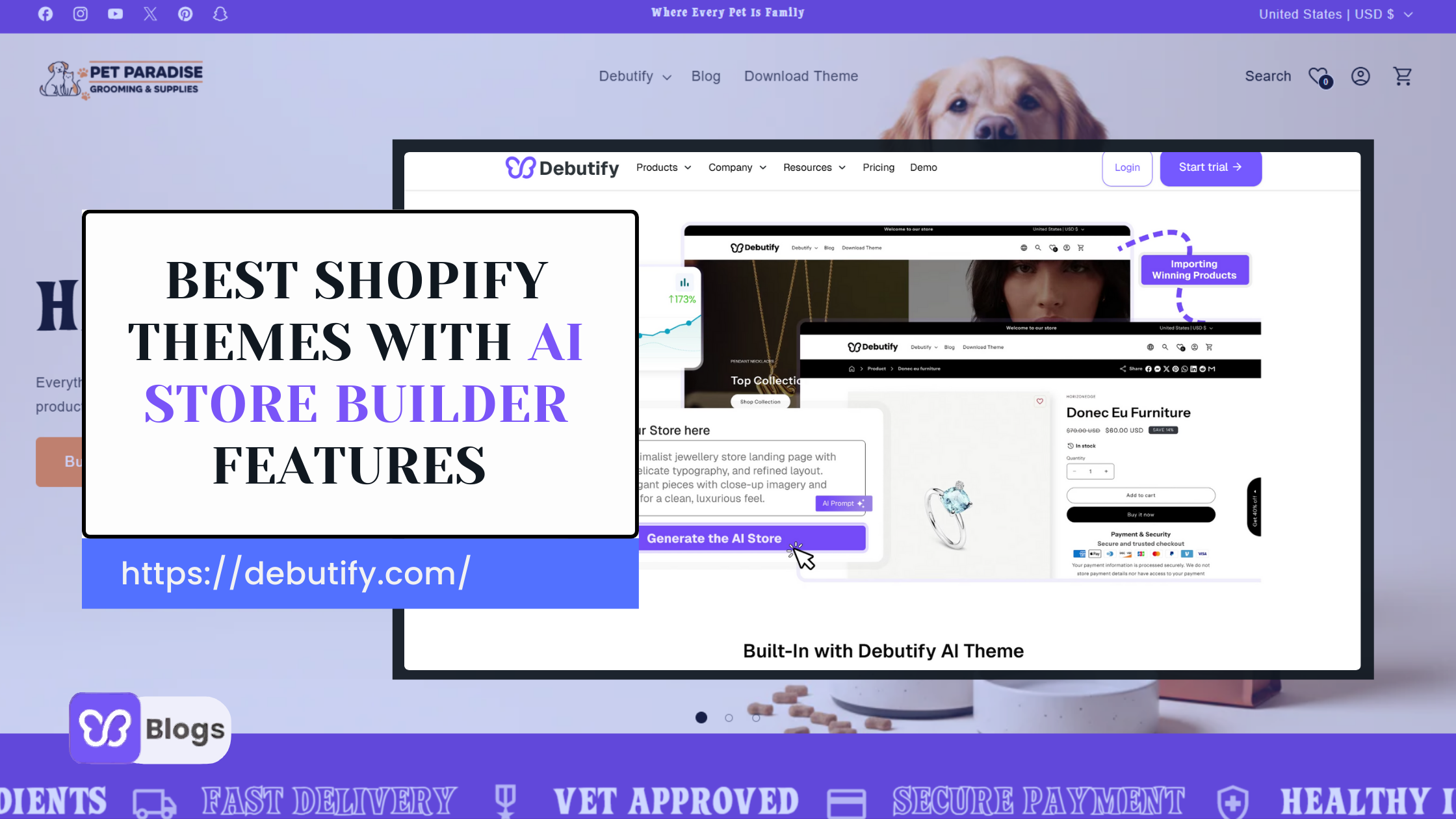Global eCommerce sales are projected to surpass $7 trillion by 2025. With more brands fighting for attention online, the competition has never been fiercer.
If you run an online store, the question isn’t just how to stand out — it’s how to measure what’s actually working.
That’s where Key Performance Indicators (KPIs) come in. These metrics give you a clear picture of your store’s performance, from traffic and conversion rates to customer lifetime value. By tracking the right KPIs, you can identify what’s driving results, spot areas for improvement, and make data-backed decisions that boost sales and profitability.
What Is A KPI?
A KPI (Key Performance Indicator) is a measurable value that shows how well your business is performing.
For eCommerce stores, tracking KPIs helps you see what’s working and what’s not. You are using real data instead of guesswork. This makes it easier to improve your website’s performance and make smarter decisions that boost sales.
Crucial Key Performance Indicators (KPIs) You Should Track
Since there’s a long list of e-commerce KPIs, it becomes overwhelming for the e-commerce store owners to pick the ones that can actually help them track their real progress.
Here, it’s crucial to understand that not every store needs to track every indicator to perform well. For instance, if your store deals with high-ticket items, you’re not required to track your cost per conversion.
The selection of the right types of KPIs depends on the nature of your business and your specific needs.
In this post, we’re going to highlight the 20 essential e-commerce key performance indicators that will help you improve your store’s overall sales, conversions, and customer service.
1. Cart Abandonment Rate/Checkout Abandonment Rate
Cart abandonment is one of the most important factors that every e-commerce store owner has to deal with at some point.
Cart abandonment rate refers to the percentage of buyers who have added products to their cart but didn’t complete the checkout process.
According to Optinmonster, the average checkout abandonment ratio was 75.6% back in 2018. There are many reasons why 76 out of 100 people abandon their carts - lack of trust, complex checkout process, and exorbitant/hidden delivery charges are just to name a few.
By measuring this KPI, marketers can create foolproof retargeting strategies to reduce this ratio as much as possible.
2. Conversion Rate
You have invested so much of your time and resources in creating attractive landing pages.
But, are they doing their job?
Even if your website is receiving a lot of traffic, there is no assurance that it is also impacting your store’s rate of conversion./
The rate of conversion simply refers to the total number of sales you have made over a specific period of time.
According to research, the average rate of conversion is not more than 2%. To calculate your conversion rate, all you need to do is divide the total number of conversions by the total number of visitors you had during that specific time period.
Conversion rate = Total number of conversions/Total number of visitors ✕ 100
For example, if you had, say, 10 sales in a month with 100 website visitors, you can calculate your conversion rate by using a formula:
Conversion rate = 10/100 ✕ 100 = 1%
3. Bounce Rate
The bounce rate refers to the percentage of those buyers who leave your website just after visiting the first page. This indicates bad UX design, slow site speed, and poor targeting strategies.
Your bounce rate also increases when you focus on targeting broad keywords only. Let’s suppose you run a gluten-free diet food store online. If you target the keyword ‘Diet food’, you can expect visitors coming to get gluten-free, keto, SCD, and other diet foods as well. This will increase your bounce rate.
In that case, you must adjust your SEO strategy to target long-tail keywords, such as
‘gluten-free diet for gluten allergy’ to target customers who’re interested in the gluten-free product range.
Knowing your bounce rate gives you an opportunity to devise strategies that can help you encourage your customers to spend more time on your website.
4. Customer Lifetime Value (CLV)
Customer Lifetime Value, also known as CLV, is the average amount of earnings that you earn per customer throughout their entire lifespan.
This KPI is crucial as it lets you know how much your business can expect from a single customer.
With CLV, you can easily determine how well your business is connecting with its existing and potential buyers.
5. Customer Acquisition Cost (CAC)
Customer Acquisition Cost is another significant KPI that helps store owners to evaluate the amount of money they’ll need to acquire a new customer.
The CAC KPI will tell you how much you have to spend on each channel to acquire a new customer.
This metric is specifically beneficial for businesses whose ultimate objective is customer acquisition instead of profit/money.
This KPI might not be useful for you if you sell expensive items online. But if you deal with low-priced products, you’ll have to find a way to reduce your CAC.
All in all, if you’re not sure about the cost to convert a prospect into a long-term loyal customer, your online store may collapse in no time.
Average Order Value, as its name suggests, refers to the average amount of money spent by your buyers on each individual order.
Since this metric is directly linked with your ROI, you have to track that carefully to know the amount of money you’re earning from each customer on average.
You can calculate your average order value for a given time period by using the formula:
Average Order Value = Total revenue/Total number of orders
Read our Guide on 7 Simple and Effective Ways To Increase The Average Order Value For Your Shopify Store and know more about the effective ways through which the average order value for your store can be increased.
7. Website Speed
Your website load time is another critical factor that significantly impacts customer engagement. A slow website contributes to poor customer experience.
Make sure you carefully examine the load speed of each page individually and fix minor issues with suitable tools to decrease load time.
8. Gross Profit Margin
Running a business comes with its own unique challenges. From product creation to devising all-inclusive selling and marketing strategies, and customer service, there’s so much an online story owner has to go through.
But all of your efforts will go down the drain if your business fails to generate enough profit. Remember, the money you generate from your sales is your net revenue, and you have to minus the costs to calculate the profit you can take home.
The Gross profit Margin refers to the difference between your revenues and costs. Needless to say, the more gross profit margin, the better.
9. Customer Engagement
Unlike profit, CAC, and conversion rate, you cannot measure customer engagement in a percentage form.
Customer engagement is often measured using reviews, shares, and subscriptions. For instance, you can measure this KPI by focusing on the total amount of time your customers are spending on your website.
People who sign up for your newsletters and those who share your content across different platforms also contribute to this specific KPI category.
10. Return On Ad Spend
ROAS is another powerful key performance indicator that can be calculated using the formula:
ROAS = Revenue/Spend
The good thing about this KPI is that you can use it for every campaign you’re running collectively as well as for each individual campaign.
With ROAS, you can see the real picture of how all of your marketing channels are working with each other.
11. List Growth Rate
There’s no strategy as effective as email marketing for e-commerce stores. That’s why it’s essential that you carefully monitor the growth of your subscriber list.
Here’s an equation you can use to calculate your list growth rate:
“List Growth Rate = [New Subscribers – (Unsubscribers + Email Complaints)]/Email List Total”
You can calculate this ratio on a weekly, quarterly, or monthly basis depending on the nature of your business and your email marketing strategy.
12. Net Promoter Score
Net Promoter Score helps measure the willingness of your existing customers to suggest your brand to others.
The Net Promoter Score ranges from -100 to 100. The positive 100 indicates a high willingness, while the -100 means the exact opposite.
While NPS is an often neglected KPI, it impacts your business’s organic growth by a whopping 20%-60%.
You can use this formula to calculate NPS for your store.
NPS = Percentage of promoters - the percentage of detractors
13. Live Chat Sessions
Almost all e-commerce stores have some sort of customer support system. Some use chatbots, while others install live chat software to give a human touch to their chat sessions
Whether you have integrated a chatbot to your system or have an active live chat support team, make sure you track its progress to improve the overall communication with your customers.
14 .Testimonials
Another critical KPI is customer testimonials that significantly impact your website traffic and sales. According to research, more than 80% of customers admit that they feel more confident buying from a website that has multiple positive reviews.
Make sure you dedicate time to reviewing the content and number of reviews you have on your website.
It’s obviously not enough to review testimonials as you must also take appropriate measures to resolve the negative ones.
It is also important to take both qualitative and quantitative data into account so that you can make the required changes.
15. Tickets Per Transaction
Simply put, a customer ticket is any form of communication medium (chat/email/phone call) that helps an e-commerce store maintain interaction with its existing or potential customers.
You can also use this metric to scale the overall progress and growth of your e-store.
16 .Cost Of Goods Sold (COGS)
Cost of Goods Sold, also known as COGS, indicates how much your business spends on selling a product or a service.
COGS measures three essential costs, including Labor, material, and manufacturing. Here is an equation that you can use to evaluate the COGS for your business.
Cost of Goods Sold = Opening inventory + purchases - closing inventory
To determine the exact purchase value, make sure you keep the time period in mind. For example, if you’re calculating the COGS for 1 year, you must sum up purchases for the entire year before you use that value in this formula.
17. Churn Rate
Customer churn rate is another critical KPI to track those customers who have stopped buying your products or services during a specific period of time./p>
Customer Churn Rate = customers at the beginning of the period - customers at the end of the period/customers at the beginning of the period.
With this info at hand, you would be able to find ways that can help you reduce your store’s churn rate. The idea is to retain those customers you worked so hard to acquire.
18 .Email Collection Rate
With an email collection rate, you can keep track of those customers who are interested in your products and services and are willing to maintain a line of communication.
Email collection rate enables you to improve your business communication strategy, which will impact the overall growth and conversion of your business.
19. Social Media Engagement
Social media engagement, including likes, shares, and followers you get for your e-commerce store also plays a significant role in the success of your e-business.
Tracking metrics specific to your social media pages will help you develop better social media interaction strategies that will foster loyalty and long-term customer relationships.
20. Customer Survey Results
Using customer surveys enables online businesses to collect feedback from their customers. Tracking this KPI will help you devise strategies that will encourage more customers to leave their feedback on your website.
Conclusion
While tracking KPIs is a great idea, it is not enough.
You must carefully assess them and pinpoint the areas where you’re lacking.
Choosing the right KPIs will help you foresee the accurate position of your business. Just ensure you choose e-commerce KPIs that you can collect weekly.
We hope this post has cleared some of your doubts about KPIs. Feel free to drop your feedback in the comments section below.




